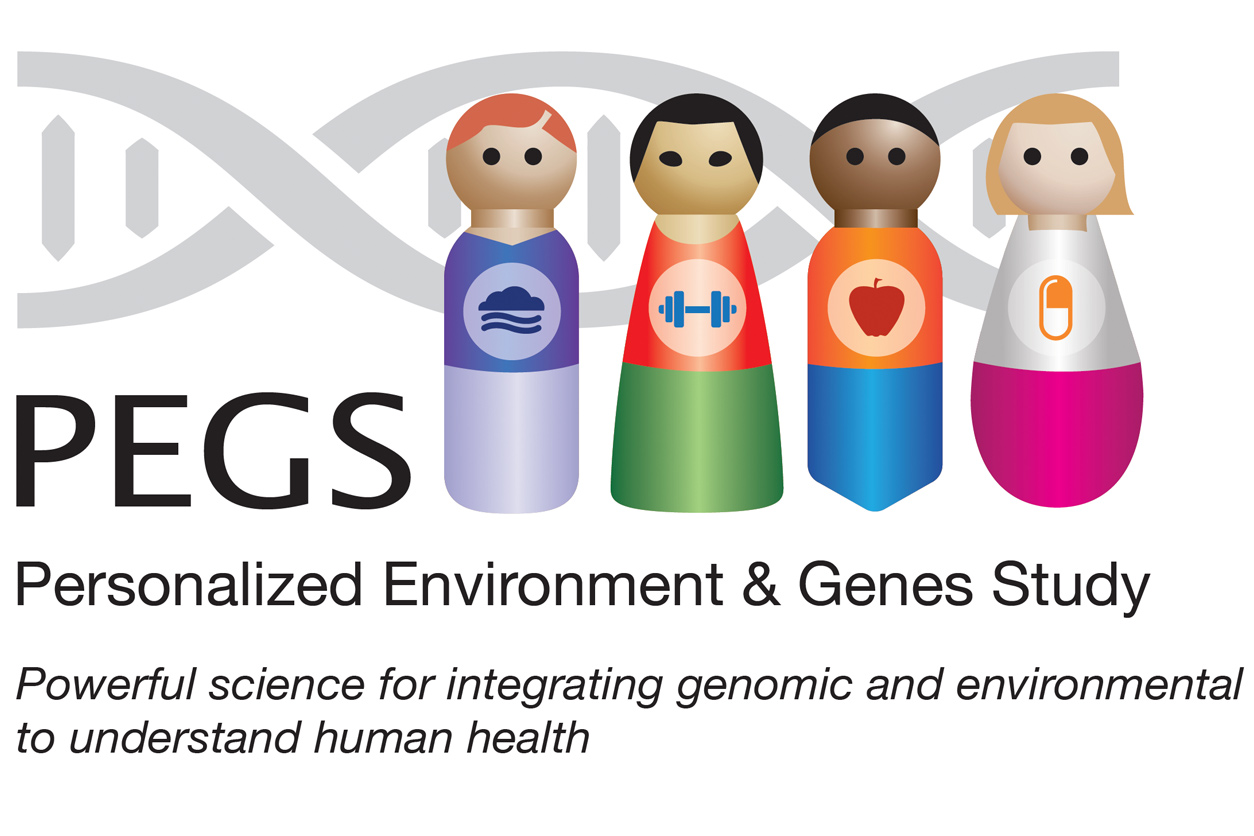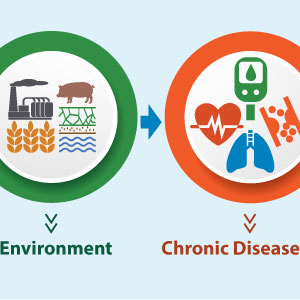Through advanced genetic analysis and cutting-edge research approaches, an NIEHS initiative to understand the complex interplay of genes and the environment promises to shed light on risk factors for diseases ranging from asthma to diabetes. The project also will open the door for the biomedical community to conduct further research and expand knowledge in this important area.
 Key to the research initiative is understanding how genetic variation can influence biological responses to environmental exposures and potentially increase disease risk. (Image courtesy of NIEHS)
Key to the research initiative is understanding how genetic variation can influence biological responses to environmental exposures and potentially increase disease risk. (Image courtesy of NIEHS)The effort began in 2002, when NIEHS established the Environmental Polymorphisms Registry (see sidebar). Polymorphisms are variations in genes that may be linked to a variety of diseases. The goal of the initiative was to collect DNA samples from a large group of individuals and determine whether genes found in mice might also be important in humans, and whether polymorphisms in these genes potentially increase risk for ill health.
Scientific advances and new research methods have made it possible for investigators to expand and improve that effort. Now, it is called the Personalized Environment and Genes Study (PEGS). The evolution of the study means good news for individuals who want to learn more about their vulnerability to common diseases and for scientists who want to explore how genetics influences our biological response to environmental exposures.
Merging data, expanding scientific knowledge
 “Leadership for the study now includes experts in medicine, genetics, genomics, data science, and sophisticated analysis,” Hall said. “We have the tools to allow potential collaborators to be able to understand the resources available through PEGS.” (Photo courtesy of Steve McCaw / NIEHS)
“Leadership for the study now includes experts in medicine, genetics, genomics, data science, and sophisticated analysis,” Hall said. “We have the tools to allow potential collaborators to be able to understand the resources available through PEGS.” (Photo courtesy of Steve McCaw / NIEHS)PEGS merges genetics data with study participants’ in-depth health history, including information about environmental exposures. The effort is unique because scientists will soon be able to follow-up with individuals who donated biological samples and completed surveys, potentially providing them with tailored feedback about their disease risk factors.
“Data now available will allow researchers to understand the effects of the environment and the interaction between genes and the environment on a much larger scale than we were able to do before,” said NIEHS Clinical Director Janet Hall, M.D. “PEGS advances our goal of providing personalized information that helps to improve health outcomes.”
That richness and diversity of data will soon include epigenetics information. Epigenetic changes are modifications to DNA that affect gene expression without altering the underlying genetic code. Through PEGS, scientists can tackle important research, including but not limited to the following:
- Identifying novel genetic and environmental factors that increase risk of common diseases, such as diabetes, heart disease, stroke, multiple sclerosis, psoriasis, rheumatoid arthritis, allergies, asthma, and cancer.
- Understanding how multiple genetic and environmental factors jointly increase disease risk.
- Using data in combination with clinical information to improve disease risk prediction.
- Discovering differences in risk factors for people of different ages, races, or ethnicities.
- Enhancing knowledge about the causes and mechanisms of various diseases.
“The combination of state-of-the art genetic analysis and in-depth information on participants’ medical conditions and environmental exposures will allow researchers to define environmental risks in a way that has never before been possible,” Hall said.
Wealth of key research information
 “The scale of PEGS data is different — having this many samples with genetic sequencing is extremely rare,” Motsinger-Reif said. “We have whole genome sequencing and environmental information, and it’s now organized and research-ready.” (Photo courtesy of Steve McCaw / NIEHS)
“The scale of PEGS data is different — having this many samples with genetic sequencing is extremely rare,” Motsinger-Reif said. “We have whole genome sequencing and environmental information, and it’s now organized and research-ready.” (Photo courtesy of Steve McCaw / NIEHS)Nearly 20,000 participants have contributed biological samples, such as blood and DNA, and many donors continue to provide health information. A subset of that larger group — nearly 5,000 people — have had their entire genomes sequenced. Enrollment into the study is ongoing.
Hall and Alison Motsinger-Reif, Ph.D., head of the NIEHS Biostatistics and Computational Biology Branch, have created a database that provides researchers access to aggregate and summary information. The study’s leadership now includes experts in medicine, genetics, genomics, data science, and other fields.
“Integrating and analyzing this variety of data requires the development of new computational methods that can be used by the broader research community,” said Motsinger-Reif. “The name change reflects the revitalization of the project with the expanded scope and opportunities.”
(Kelley Christensen is a contract writer and editor for the NIEHS Office of Communications and Public Liaison.)









